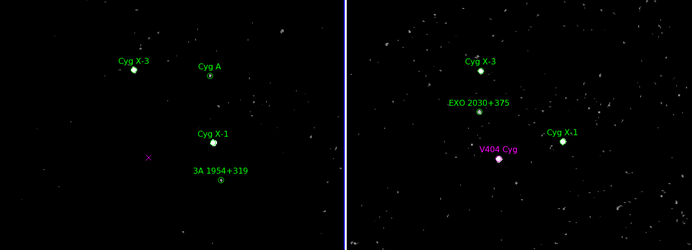

Integral's OMC camera sees Cygnus X-1
The 'first-light' image of the Cygnus region, captured with the Optical Monitoring Camera (OMC) aboard ESA's Integral satellite, was taken in November 2002. The full image covers an area of sky 10 times larger than the full Moon and contains about 20 000 stars, many of which are more than 1500 times fainter than the human eye can see. Cygnus X-1 is located at the centre of the square on the image. The star visible at this location is called HDE 226868 and is in orbit around Cygnus X-1. HDE 226868 itself is more than 10 times fainter than the naked eye can see. Another star, just above HDE 226868, is a background object that has no relation to Cygnus X-1.
Cygnus X-1 is about 10 000 light years from Earth and one of the brightest high-energy emitters in the sky. It was discovered in the 1960s and is thought to be a black hole, ripping its companion star to pieces. The companion star, HDE 226868, is a blue supergiant with a surface temperature of around 31 000K. It orbits the black hole once every 5.6 days.





